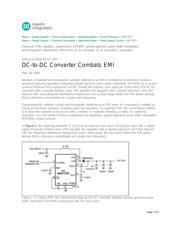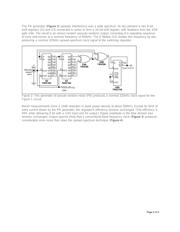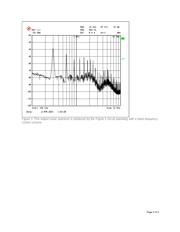下载

Maxim > Design Support > Technical Documents > Application Notes > Circuit Protection > APP 1077
Maxim > Design Support > Technical Documents > Application Notes > Power-Supply Circuits > APP 1077
Keywords: EMI, radiation, suppression, SSPWM, spread-spectrum pulse-width modulation,
electromagnetic interference, MAX1703, dc-dc converter, dc dc converters, convertors
APPLICATION NOTE 1077
DC-to-DC Converter Combats EMI
May 28, 2002
Abstract: Unwanted electromagnetic radiation referred to as EMI is emitted by all electronic systems,
including switching regulators. Adopting spread-spectrum pulse-width modulation (SSPWM) as a control
scheme enhances the suppression of EMI. Driving the external clock input pin of the MAX1703 DC-DC
converter with a pseudo-random noise (PN) provides the regulator with a spread spectrum clock that
reduces EMI. Spreading the interference frequencies over a wide range lowers the EMI power density
that is otherwise concentrated at a single clock frequency.
Electromagnetic radiation (called electromagnetic interference or EMI when it's unwanted) is emitted by
nearly all electronic systems, including switching regulators. To suppress EMI, the conventional method
is to block the radiation at its source with a metallic or magnetic shielding, or both. For switching
regulators, you can further enhance suppression by adopting a spread-spectrum pulse-width modulation
(SSPWM) control scheme.
In Figure 1, the switching regulator IC (U1) has an external clock input. Driving this input with a digital
signal of pseudo-random noise (PN) provides the regulator with a spread-spectrum clock that reduces
EMI. By spreading interference frequencies over a wide range, this technique lowers the EMI power
density that is otherwise concentrated at a single clock frequency.
Figure 1. To reduce EMI, this conventional step-up DC-DC converter employs spread-spectrum pulse-
width modulation (SSPWM) produced by the PN clock input.
Page 1 of 4






